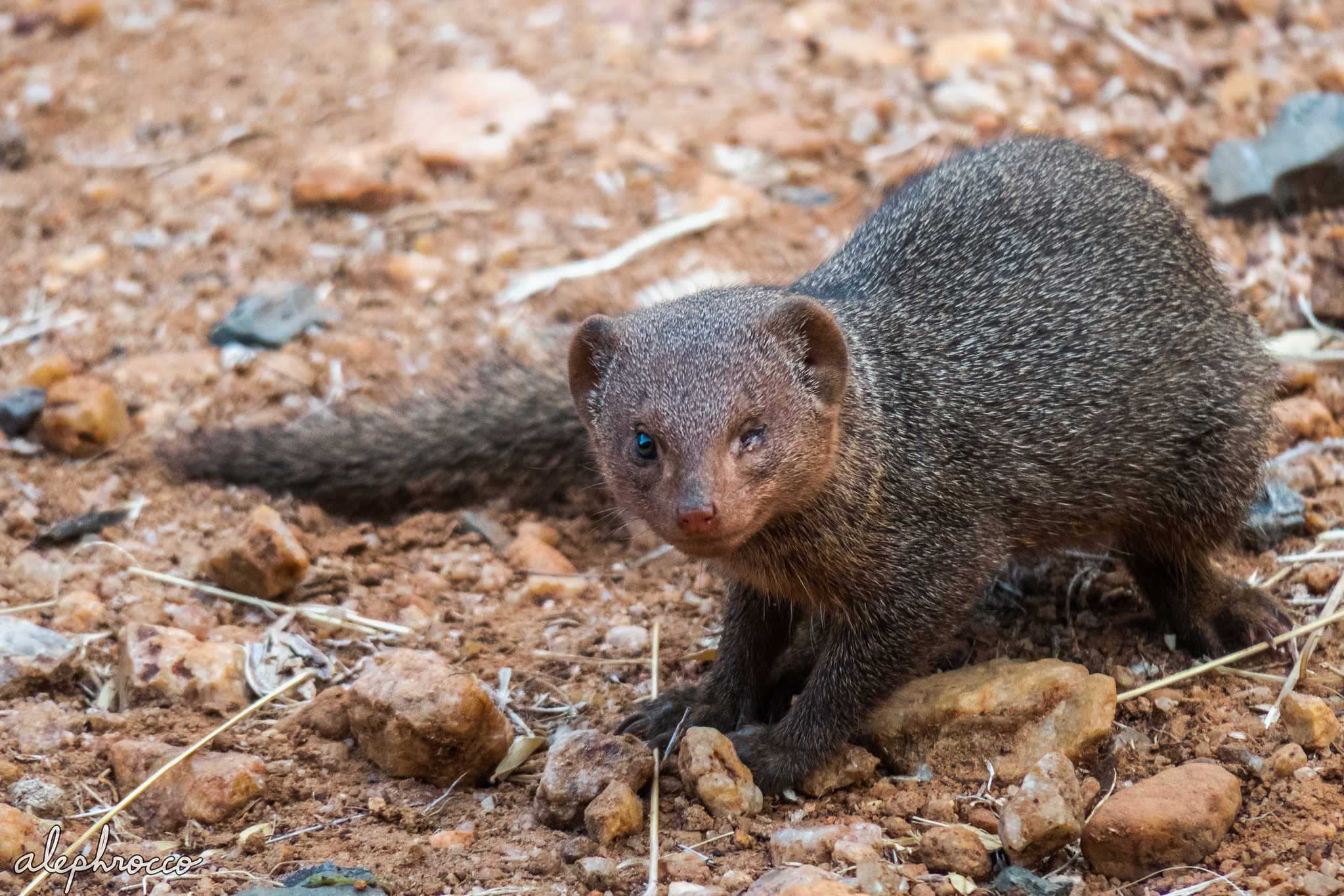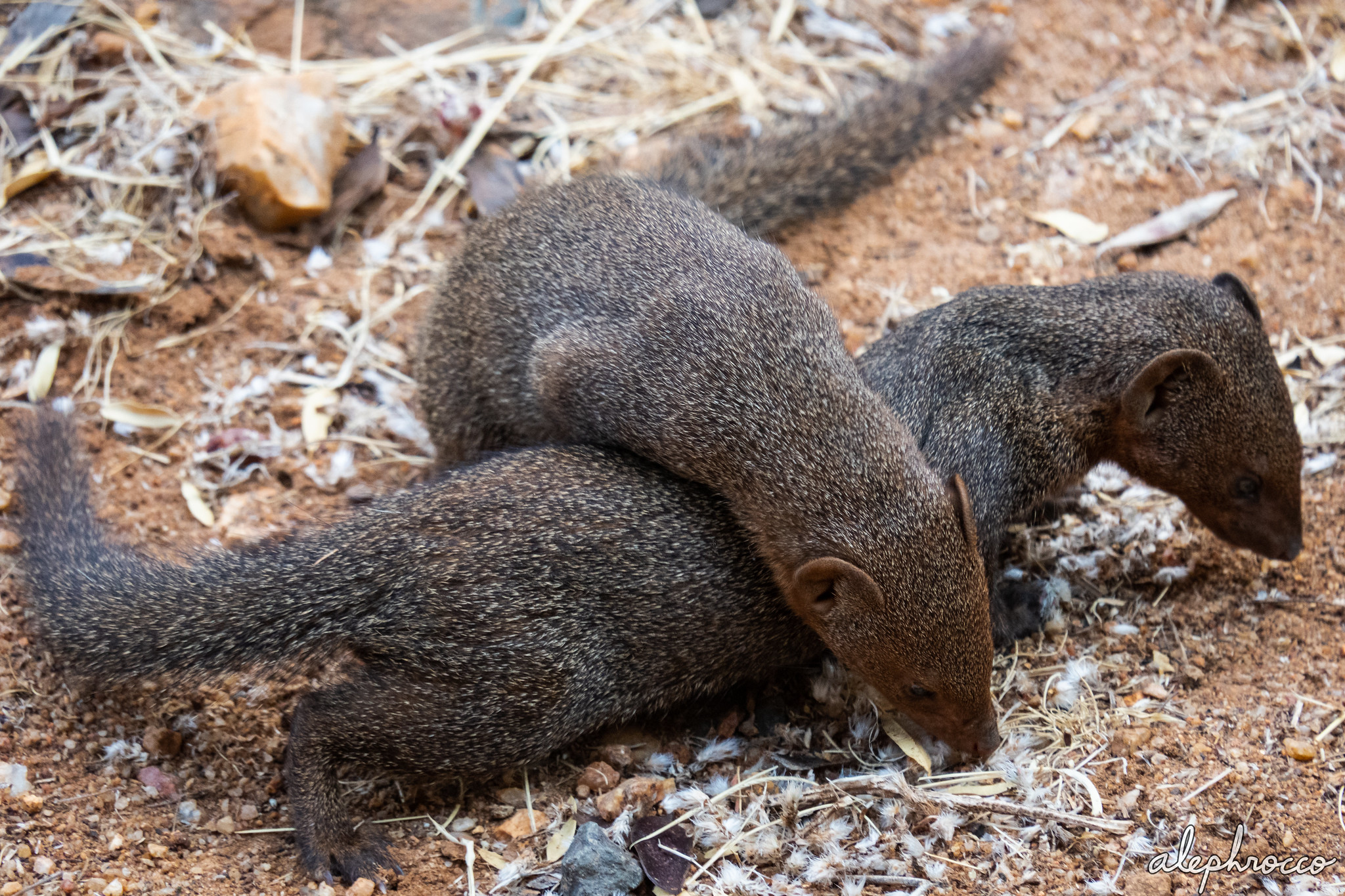
The slender mongoose (Galerella sanguinea) is one of five mongoose species that occur at Mpala. They are small in stature with a body size measuring about one foot long followed by a characteristic elongate black-tipped tail. Though a common species throughout sub-Saharan Africa, they are extremely agile and fast-moving, making prolonged observations difficult. Just as I am writing this post actually, a slender mongoose just poked out of some tall grasses, stood up on its hind two legs, and looked directly at me for a few seconds. Mongoose are quickly becoming one of my favorite mammals. Their mannerisms and expressions are always entertaining, and they are some of the most dynamic animals I’ve ever witnessed. Though certainly vulnerable to larger carnivores, mongoose are adept top-tier predators for their size. They forage on arthropods, but will regularly take on larger lizards, rodents, birds, and snakes. Online there is fascinating video footage of a slender mongoose predating on a black mamba — I highly recommend checking it out. To witness such an event (especially the mongoose’s head movements) would probably be the coolest natural history observation I could imagine. Something unusual about the mongoose is that they have horizontally-slit pupils. A common argument for this kind of eye morphology is that when the eyes are placed laterally (such as in a goat or Ahaetulla vine snake) the horizontal slits provide more of a panoramic visual field, having a greater span of visual acuity from the back of the head to the front. In the mongoose, however, the eyes are front-facing, and in contrast to prey animals with horizontally-slit pupils, eagles and other raptors are likely their most common predator and swoop from above.

Shortly after the passing of the slender mongoose, a troop of dwarf mongooses (Helogale parvula) stormed through. Dwarf mongooses are highly social, living in family groups of over two dozen individuals. We saw certain individuals performing a scouting behavior, standing on the hind two legs to scan their immediate surroundings for potential threats, while others came together in succession, pausing next to each other repeatedly. During our observation time we were able to see some variation in behavior between individuals. One of the mongooses was missing its left eye and seemed to be much more bold than the others. It stayed out in the open and would segregate from the group much more often. Maybe this risk-taking behavior predisposed it to the injury, though on the other hand it may be confident of its capabilities. Two crested francolins (Dendroperdix sephaena) and a few striped ground squirrels (Xerus erythropus) were situated nearby, and although the slender mongoose didn’t seem to mind much, the dwarf mongooses backed down readily from confrontation. One individual (not sure if it was scarface) even had a brief scuffle with a francolin. The bird charged and flapped its two wings to hit the mongoose while the mongoose hit the bird across the face with its right paw.
Photographed after attracted to some sort of disposed food items [4]








